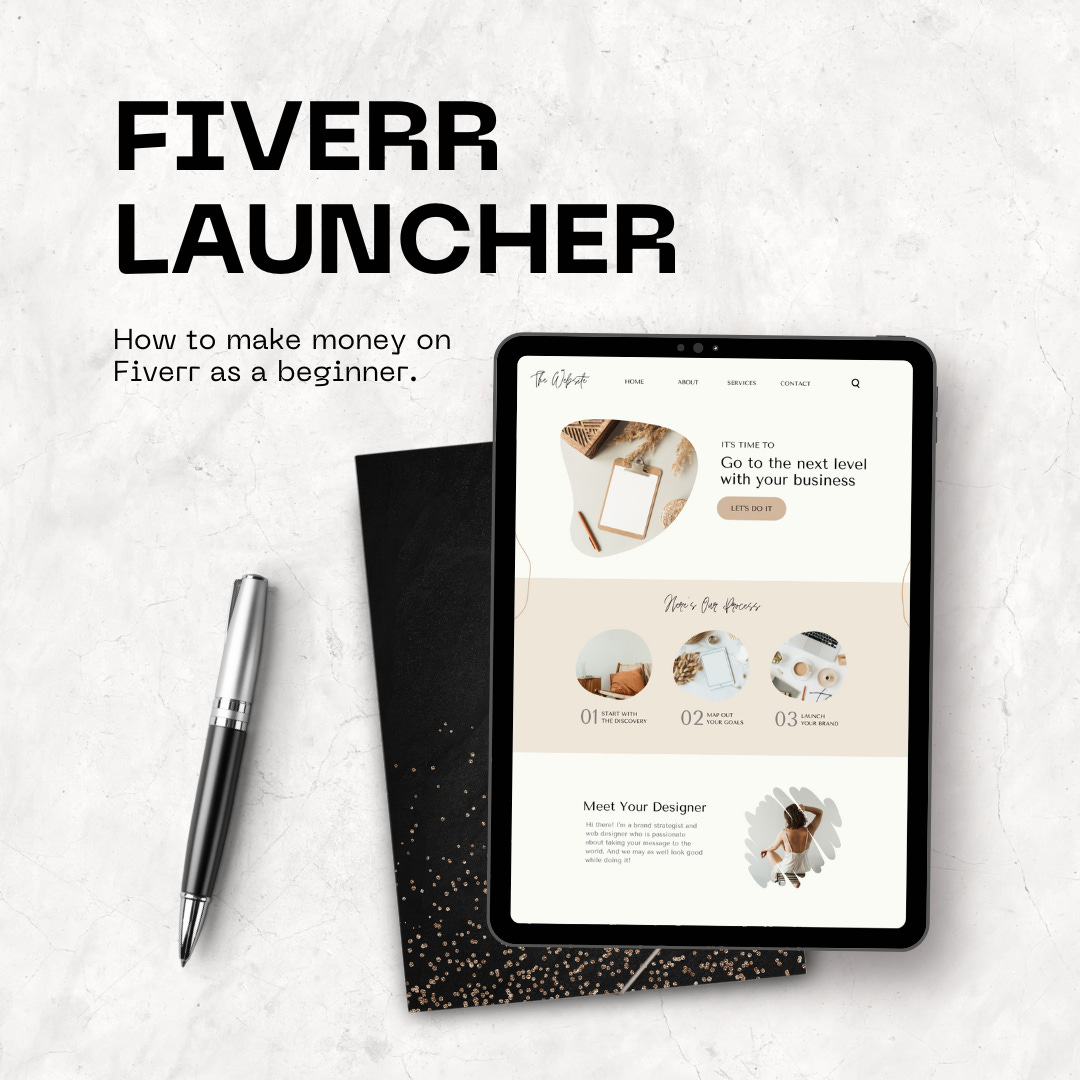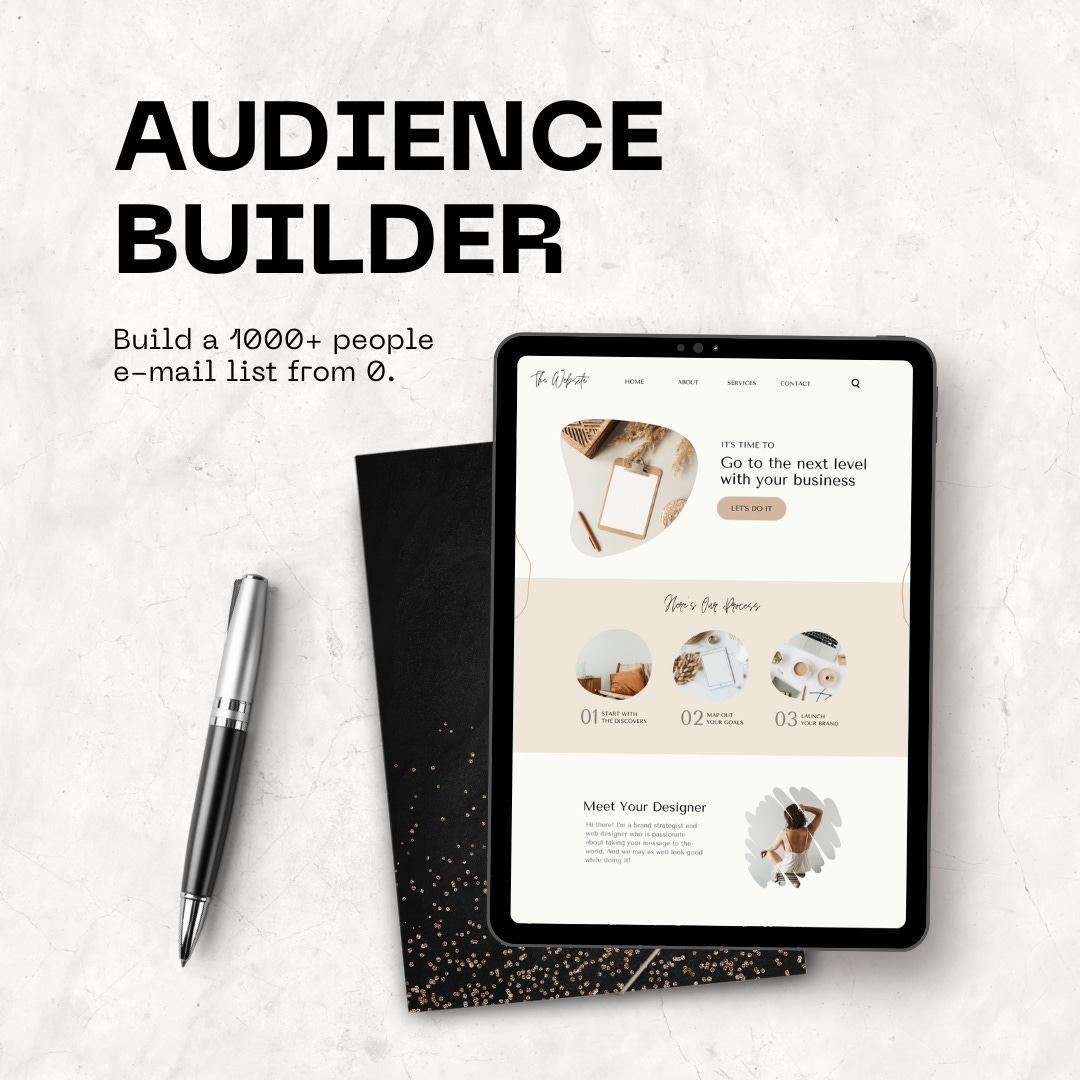The 3-stage path to crazy successful solo business
Anyone can do it but not everyone will.
4 years into solopreneurship, I made $60-$70K per year doing 2–4 hours of work per day.
I’d made it!
I could travel anywhere. I could skip work one day and work a full day the next.
We paid off our debt, and we could afford premium medical care which helped me get pregnant after 4 years of trying.
Yet, 4 years into solopreneurship, I gave up.
I was burnt out, sick of client work, exhausted.
I had everything I wanted but I hated the work.
Not liking the work sounds like a silly problem to have.
But if you’ve ever been in that situation, you know living like that long-term is impossible.
And since I didn’t know what to do, I simply gave up. I paused all my Fiverr gigs, cancelled my regular contracts and waved the white flag.
I was already pregnant, so I decided I’d focus on my baby for a while and figure it out later.
Luckily, my husband stepped up, took my freelance practice and turned it into a copywriting agency.
I wondered back then if my dream of being a solopreneur was a stupid lie that could never work long-term.
I know now that I just didn’t understand the stages of solopreneurship.
Anyone who’s stuck on stage one of solopreneurship for 4 years would burn out and give up.
So what should I have done? Let’s go through the stages and figure it out.
Stage 1: The worker
Positioning: I’ll do something amazing for you.
Everyone wants to be the solopreneur who writes a few posts per month and makes $20K.
You can totally achieve that, just not right away. That’s a stage 3 type of thing.
When you’re starting as a solopreneur, you have no online audience, no credentials (or few credentials, if you have a relevant background), and frankly, no understanding of your audience.
In fact, many beginning solopreneurs don’t know what they want to do at all. Can’t choose a niche, a type of business, anything.
That’s why the best thing to do in stage one of solopreneurship is to do the work, even if it brings you little or no income.
You can:
Offer services. That’s where I was. I had written copy for thousands of businesses, including SO MANY solopreneurs.
Offer 1–1 coaching or consulting. Help people figure it out one-on-one so you can see where they struggle and start noticing patterns.
Offer customization. Get into the details with every client, and help them solve their specific problems. SO MANY online “gurus” give us the same ol’ pieces of advice because no one cares enough to go deep.
Present yourself as someone energetic and willing. Put yourself forward on the biggest freelance platforms, adjust your social media accordingly, and sell the easiest thing you can possible sell: services. Everyone wants to get someone else to do things for them, especially at a good price.
Doing the work will give you:
Experience & know-how.
Credibility & confidence. You’ll get some feedback & testimonials you can use.
Money. I made almost half a million dollars online at stage one. That’s not a good thing. You should move to stage two a lot sooner. My point here is that you can build a good income on stage one alone.
The problem with staying at stage one for too long is you get tired of doing the work. You’re on your own, and you start doing the same things again and again. It gets boring and you hit an income ceiling, and you know something is off, but you can’t quite put your finger on it…
There are two ways to move away from stage one of solopreneurship:
You go from a solopreneur to a full-blown business. Some solopreneurs take that route. For them, solopreneurship is a stepping stone to a bigger business.
You move to stage two of solopreneurship. Which is…
Stage 2: The expert
Positioning: I’ll show you how to do something amazing.
After a maximum of one year in stage one — and after you’ve reached a level of consistent $1000 months — you’re ready to move into the stage of the expert.
The expert:
Positions themselves differently online.
Offers high-level, high-cost services.
Uses their knowledge to move into a product or content business.
The expert doesn’t win clients by energetically agreeing to any request — they win clients by bringing expertise to the table.
So how to move into the stage of the expert? There are many things you should consider: your short bio and images; pricing; the type of business you want to do; the type of collaborations you want to do.
But the most important thing that can position you as an expert is to build your credibility. You can do that by:
Confidently sharing your success stories.
Getting featured in big media.
Creating a good-looking (if basic as a functionality) website.
Sharing high-quality content online consistently.
Figuring out who your audience is & building an e-mail list. Ideally, you’d have some audience from your days of the worker, but even if you don’t (I didn’t), you should look into building it at this stage.
Over the past year, I’ve been looking into transitioning from worker to expert. I got featured in Business Insider, I started sharing my achievements openly and got serious about building an e-mail list.
My consistent effort led me to exponential growth in followers, subscribers and even income. These results weren’t due to platform-related growth hacks (although I do know how to use the platforms I’m on), but rather a byproduct of me presenting myself in a new way, and using my know-how to solve the problems I know people have.
This is the stage of $1K-$10K months.
Stage 3: The Brand
Positioning: I’ll show you how to do something amazing my way.
In stage three of solopreneurship, it’s not just about what you can do, and it’s not just about what you know.
It’s about who you are.
This is when people are ready to pay you big money because you’re you and there’s no one else quite like you.
Yes, there are other workers and there are other experts, but none of them is as quirky, or smart, or funny, or caring, or honest, or whatever. No one makes them see things the way you do.
To get to this stage, you should completely rethink your business and your personal brand.
Figure out your branding. The easiest way to think of it, if you were in a boy/girl band, who would you be?
Build a f*cking awesome website. You should have the money to do so by now.
Get professional photos done.
Get a logo, a header & a footer for your e-mails.
Get someone to help you with the operational part of marketing & sales.
Build phenomenal products/services/content. Really next level. That requires time, thought, and doing things your way.
Take time to relax. At this level, you should be all about strategy & awesome ideas. Awesome ideas can’t come to you if you don’t relax.
Many solopreneurs hurry to learn “personal branding” way too early. They end up talking about themselves without really having anything worthwhile to say.
So personal branding has gotten a bad rep.
But at this stage, you absolutely need to learn personal branding & become a marketing genius.
This is the stage of consistent $10K+ months. Kristina God recently interviewed Ayodeji Awosika and he said he’d be disappointed if he only made $10K this month.
Well, yeah. Because that’s where he is. He’s attracted the audience, he’s developed the brand, products and services to match his level.
Consider stepping onto this level only when:
You have at least 10K e-mail subscribers
You make $5-$10K per month consistently
Where are you?
My best guess is that most of my subscribers are either struggling to get to stage one or struggling to get to stage two.
Does that sound about right? Because if so, I have a MASSIVE surprise for you.
If you’re still a beginner and struggle to find clients to offer services to, you’ll love…
“Fiverr Launcher”
How to make money on Fiverr as an absolute beginner.
In Fiverr, you can offer absolutely any kind of service. Whatever you can think of, there are people who are successfully making thousands of dollars offering it on Fiverr.
In my Fiverr mini-course, you’ll build your Fiverr profile & your first gig so that you can get your first sale within one week.
You’ll also get:
My cheat sheet of Fiverr keywords for freelance writers + the process of finding the best Fiverr keywords for any kind of service or industry.
My proven-to-work template for gig descriptions that will have people run to get their wallet.
My exact quick-response messages so that you can close any lead.
This Fiverr course works for any industry & is super easy to apply. You can have everything set up withing 2 hours.
The “How to make money on Fiverr as a beginner” mini-course is designed by a $240K+ Fiverr writer and comes with a full 7-day Money-Back Guarantee.
The “How to make money on Fiverr as a beginner” launches on Friday, 14th of June. To be among the first to learn when it’s live, click below to let me know.
If you’re already a stage one solopreneur, but struggle to move to stage two, welcome to…
“The Audience-Builder for Beginners.”
Build your e-mail list of high-quality subscribers from absolute 0.
What does it mean to have high-quality subscribers? You don’t want people to give you an e-mail account they don’t use just to get your freebie. SO MANY e-
mail lists are full of 123@gmail.com e-mail accounts.
Not on my watch!
This is about building a highly engaged e-mail list faster than you thought possible. We’ll aim at getting you your first 1000 subscribers, even if you’re starting from 0.
This includes:
My strategy for building a 15K audience across platforms (including 1600+ e-mail list) starting from scratch.
My awesome about section-builder — or how to present yourself so that people click “subscribe” before they know what hit them.
My step-by-step strategy for writing killer short & long content online.
How to choose the best online platforms for your business & who to learn from for each (because — I know it’s shocking — I don’t know everything)
The Audience-Builder mini-course also comes with full 7-Day Money Back Guarantee. It launches on Friday, 21st of June. To be among the first to learn when it’s live, click below to let me know.







A newbie. So I'm in Stage 1 now.
Thanks for the inspiration. I would like to know why you have not mentioned Upwork in your article. Fiverr is fabulous but, I have heard that Upwork is even better, so, I'm curious to know from an expert like you.Thanks again!